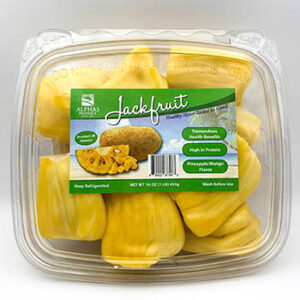Fuzzy squash, also known as hairy gourd or moqua, is a fascinating vegetable that deserves more recognition in kitchens around the world. Native to East and Southeast Asia, this unique gourd is named for its soft, fuzzy exterior, which distinguishes it from other varieties of squash. Despite its unusual appearance, fuzzy squash offers a mild flavor, tender texture, and a wealth of nutritional benefits. Whether you’re familiar with it or just discovering it, here’s why fuzzy squash should be a staple in your kitchen.
Nutritional Benefits of Fuzzy Squash
Fuzzy squash is low in calories, making it a great option for those watching their diet or looking for a light, refreshing addition to meals. Here are some of the key nutrients found in fuzzy squash:
- High in Fiber: Fuzzy squash is rich in dietary fiber, which helps promote healthy digestion and can aid in maintaining a healthy weight.
- Vitamins and Minerals: It is a good source of vitamin C, which supports immune function, and vitamin A, which is essential for eye health. It also contains small amounts of calcium and iron, contributing to bone health and red blood cell production.
- Hydrating: Fuzzy squash is composed of a high water content, which helps keep you hydrated and feeling full, especially during hot weather.
How to Prepare and Cook Fuzzy Squash
Despite its prickly-looking exterior, preparing fuzzy squash is simple. You can peel the skin off with a vegetable peeler or leave it on for added texture, depending on your recipe. Once peeled, the flesh is soft and easy to work with, making it perfect for a wide range of dishes.
Here are some ways to incorporate fuzzy squash into your meals:
- Stir-Fries: Cut the squash into thin slices or small cubes and stir-fry with garlic, ginger, and soy sauce. Fuzzy squash absorbs flavors well and pairs wonderfully with other vegetables and proteins like tofu or chicken.
- Soups: Fuzzy squash is commonly used in soups, particularly in Chinese and Southeast Asian cuisines. Add it to a clear broth with meatballs, shrimp, or pork for a comforting, nutritious dish.
- Steamed or Boiled: You can steam or boil fuzzy squash for a simple side dish. Add a touch of salt, soy sauce, or sesame oil to enhance its natural flavors.
- Stuffed Squash: The hollow core of the squash is perfect for stuffing. Fill it with ground meat, rice, or your favorite vegetables, then bake or steam it for a hearty, delicious meal.
Health Benefits of Eating Fuzzy Squash
In addition to being packed with essential nutrients, fuzzy squash also offers several health benefits:
- Supports Digestion: Thanks to its high fiber content, fuzzy squash aids in smooth digestion, reducing the risk of constipation and promoting gut health.
- Promotes Hydration: The water-rich nature of the vegetable makes it a perfect food for staying hydrated and maintaining electrolyte balance.
- Boosts Immunity: The vitamin C content in fuzzy squash helps boost immune function, making it a great addition to your diet, especially during cold and flu season.
- Supports Weight Loss: Low in calories and high in fiber, fuzzy squash helps keep you full and satisfied without adding extra calories to your diet.
Where to Find Fuzzy Squash
Fuzzy squash is often available at Asian markets or specialty grocery stores. It may be sold under different names such as moqua, hairy melon, or mao gua. Choose squash that feels heavy for its size and has firm, unblemished skin. If you can’t find it fresh, some stores also carry it frozen, which is a convenient alternative.
Final Thoughts
Fuzzy squash is a versatile, nutritious, and delicious vegetable that can add variety to your meals. Whether you are stir-frying it, adding it to soups, or simply steaming it, fuzzy squash offers a unique texture and mild flavor that pairs well with many different ingredients. Next time you’re looking to try something new in the kitchen, give fuzzy squash a chance. Your taste buds—and your body—will thank you!
If you haven’t already, be sure to explore this fantastic vegetable and see why it has been a staple in Asian cuisine for centuries.


